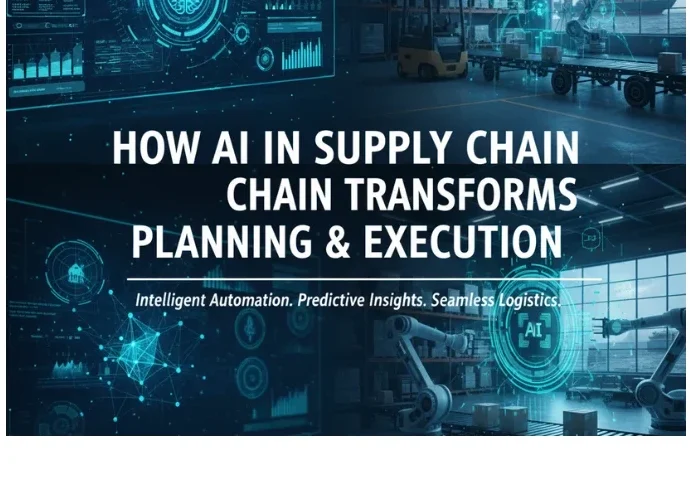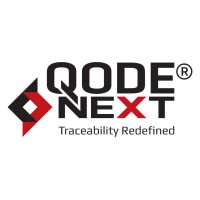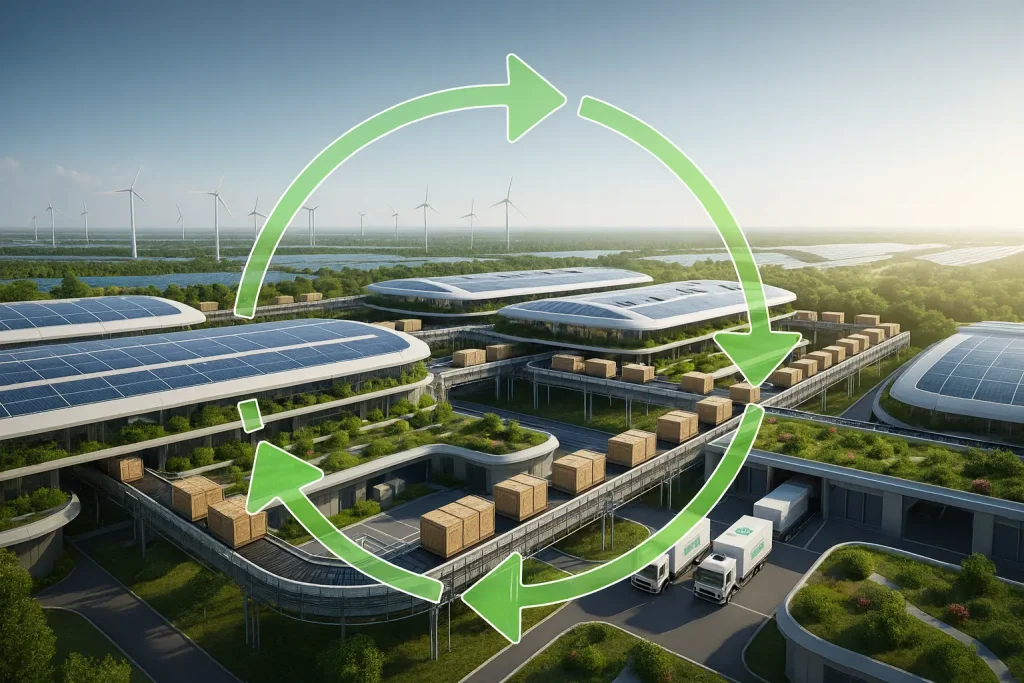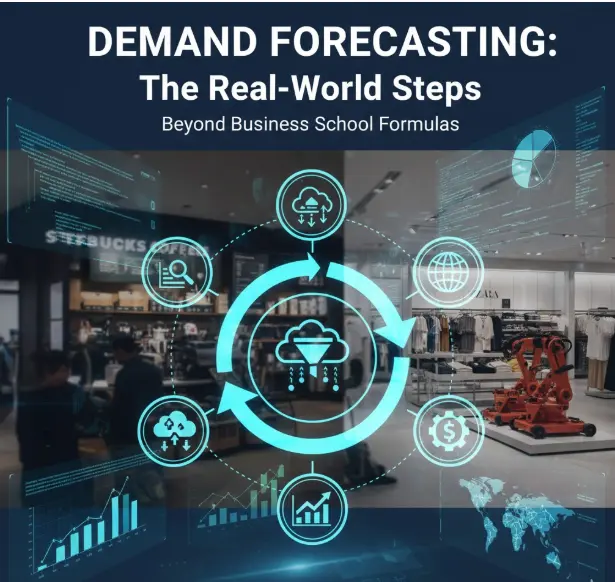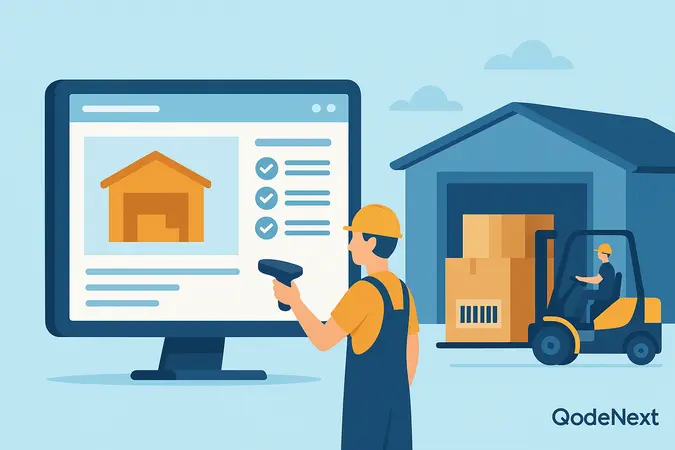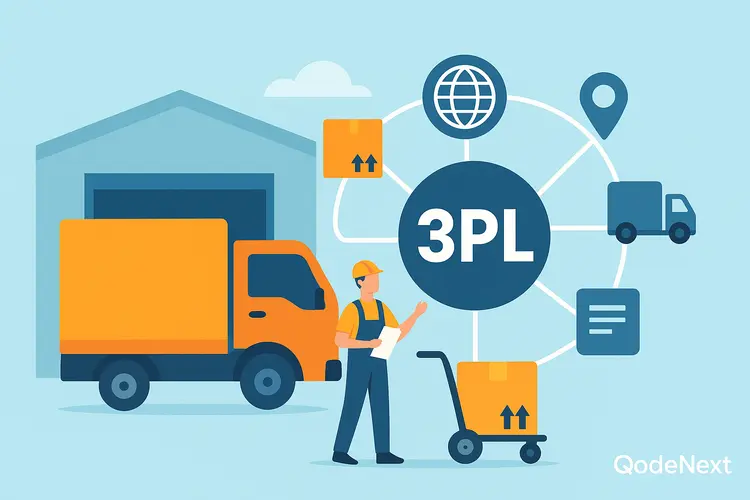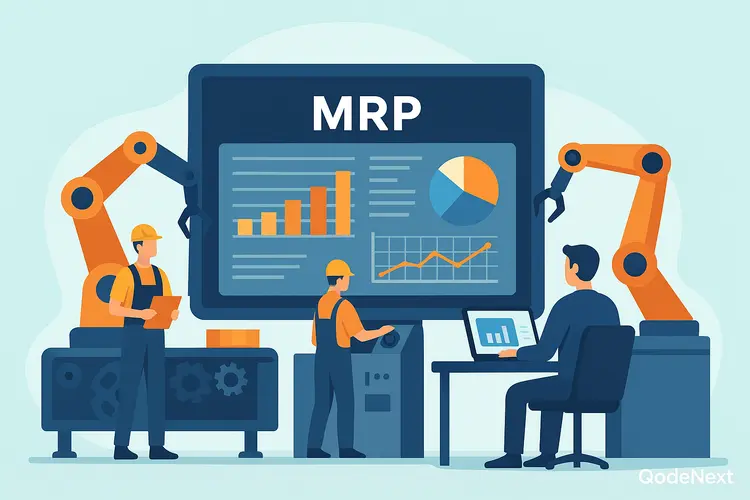We’ve all been on the sharp end of a supply-chain surprise – a late shipment that creates a scramble, a sudden stockout that frustrates customers, or a factory halt while teams hunt for the right parts. Those moments aren’t just operational headaches; they’re missed opportunities. That’s where AI in Supply Chain steps in. It doesn’t replace the people who know the business – it helps them see patterns faster, make clearer decisions, and stop small problems from turning into crises.In this guide we explain what AI actually does on the ground, how it forecasts demand with fewer surprises, recommends smarter inventory levels, spots exceptions before they cascade, and frees teams to focus on higher-value work. We’ll walk through practical strategies, real examples of how teams use AI in logistics and supply chain today, the benefits you can expect, and the common challenges we have to manage.
Read on and you’ll have a concrete playbook to pilot AI in your own supply chain.
What is AI in Supply Chain?
Let us keep this simple.When we talk about AI in Supply Chain, we mean using machine learning, optimization algorithms, and intelligent automation to make planning, execution, and monitoring smarter. Practically, that looks like models that forecast demand, systems that recommend what to stock and where, anomaly detectors that spot problems early, and automated rules that trigger actions without manual chasing. In short, AI turns data into clear, usable decisions across procurement, manufacturing, warehousing, and transportation.Now that we have a working definition, let us look at why it matters.
Why AI matters for supply chains
We see five big reasons teams adopt AI in Supply Chain:
- Better forecasting. Models pull together sales history, promotions, weather, and market signals to predict demand more accurately. For example, a retailer can prepare regionally for a sudden promo and avoid emergency restocks.
- Inventory efficiency. AI recommends safety stock by SKU and location, so we carry less capital while keeping customers happy. A regional warehouse that follows these suggestions often shrinks excess inventory noticeably.
- Faster exception handling. Anomaly detection flags late shipments or quality dips early, so teams can act before a small issue becomes a crisis.
- Route and transport optimization. Routing algorithms save time, miles, and fuel by consolidating loads and re-routing in real time when delays occur. Carriers cut empty miles and delivery windows improve.
- Labor and automation. AI helps allocate people and machines better – smarter pick paths, robotic sorters, and work schedules that match demand peaks.
Now let us look at how to adopt AI with purpose.
Strategic approaches to adopting AI in Supply Chain
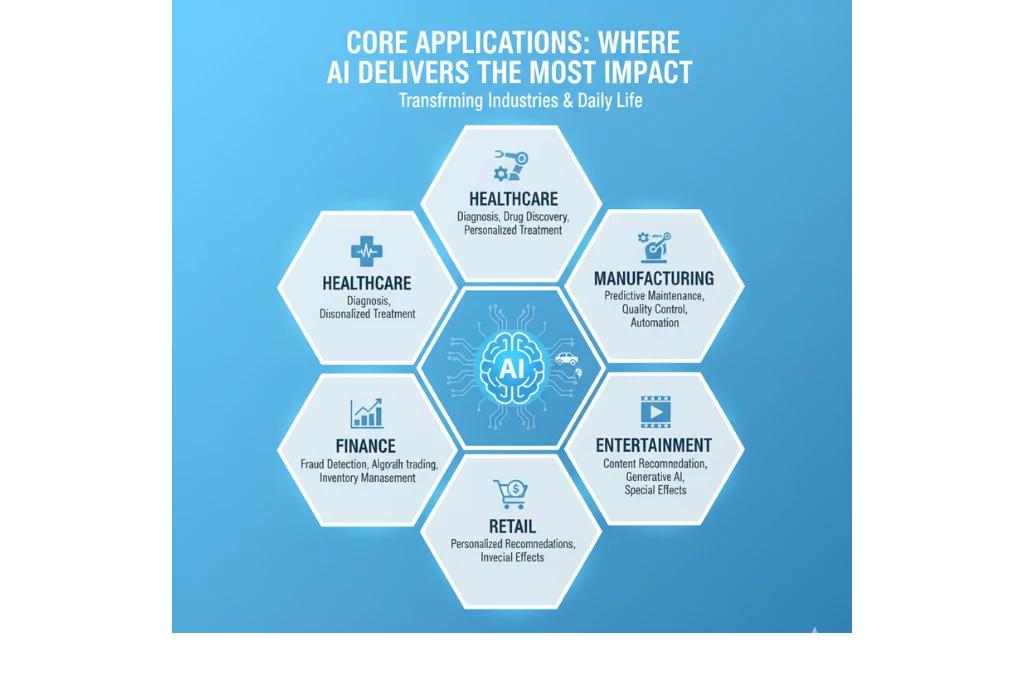
Now let us discuss how organizations actually start.
- Start with the outcome, not the model. Define what problem you want to solve – faster deliveries, fewer stockouts, or lower costs – then choose techniques to solve it.
- Pilot small, scale fast. Run a focused pilot (one DC, one product family) to prove value before expanding.
- Data-first mindset. Clean, integrated data is the foundation. Invest in pipelines, standard definitions, and governance early.
- Cross-functional teams. Combine supply chain leads, data scientists, and IT so models match operational reality.
- Measure business KPIs. Track service levels, inventory turns, and cost-to-serve – don’t obsess only about model accuracy.
Now that strategy is clear, let us walk through the core applications where AI delivers real workday value.
Core applications: where AI delivers the most impact
Now let us translate strategy into day-to-day actions.
Demand forecasting and planning
What it does: Uses many signals – historical sales, promotions, events, weather – to forecast demand per SKU and location.
Why it helps: Fewer stockouts, less excess stock. A grocery chain that uses these models can prep stores for a heatwave promotion in advance.
Inventory optimization
What it does: Recommends reorder points and safety stock based on lead times, variability, and service targets.
Why it helps: Balances working capital with availability; procurement sees fewer rush orders.
Warehouse optimization
What it does: Suggests slotting, pick routes, and shift schedules using usage patterns.
Why it helps: Pickers walk less, throughput rises, and cycle times drop.
Transportation and route planning
What it does: Plans optimal routes, consolidates loads, and reassigns carriers dynamically.
Why it helps: Reduces transit time and emissions; carriers cut fuel costs.
Procurement and supplier management
What it does: Scores supplier risk, forecasts lead-time variability, and suggests alternate sources.
Why it helps: Procurement avoids surprises and shortens reaction time to supplier issues.
Quality and inspection
What it does: Uses computer vision and pattern detection to spot defects faster than manual inspection.
Why it helps: Reduces rework and speeds root-cause analysis.
Exception management and control towers
What it does: Centralizes alerts and uses AI to triage and recommend corrective actions.
Why it helps: Operations focus on exceptions that require judgment, not routine noise.
Now that the applications are clear, let us turn to the technical and data basics that make them work.
Data and technology stack essentials
Now let us outline the practical architecture.
- Data lakes & pipelines — reliable feeds from sales, orders, shipments, and sensors.
- Feature stores — consistent variables (lead time, velocity) used by models.
- Model serving & APIs — deployable endpoints that planners and systems can call.
- Explainability tools — so teams understand why a model made that suggestion.
- ERP/WMS/TMS integration — to turn insights into actions.
Now that the stack is clear, let us look at a simple roadmap to implement AI projects.
A practical implementation roadmap
- Pick a measurable use case (e.g., reduce stockouts by X%).
- Assess data readiness—identify gaps and quick fixes.
- Prototype quickly—test models on historical data.
- Pilot live—compare AI decisions to current practice in a controlled setup.
- Measure & refine—use operational feedback to tune the model.
- Scale & automate—deploy with monitoring and retraining plans.
Now that the rollout steps are set, let us look at the people side.
Organizational change and skills
Now let us address the human part.
- Augment the planner, don’t replace them. Present recommendations with explanations so planners can trust and act.
- Build data literacy. Short training on interpreting AI outputs helps adoption.
- Set decision governance. Define who acts on the model and when human override is needed.
- Create cross-functional ownership. Data, IT, and supply chain must share responsibility for ongoing performance.
Now that people are organized, let us talk about how we measure success.
KPIs and measuring success
- Forecast accuracy (MAPE) — tied to improved fill rates.
- Inventory turns — higher turns mean lower holding costs.
- Service level / On-time delivery — tracks customer experience.
- Cost-to-serve — net savings from optimization.
- Time-to-decision — speed of resolving exceptions with AI help.
Challenges of AI in Supply Chain
Common challenges of ai in supply chain include:
- Data quality & fragmentation. Siloed, messy data weakens models.
- Model drift. Changing behavior or markets can make models stale.
- Integration complexity. Connecting models to legacy ERP/WMS is often harder than building the model.
- Change resistance. Teams may distrust opaque recommendations.
- Regulatory & ethical concerns. Decisions that impact service or jobs need careful governance.
Each of these challenges is manageable with the right controls. Now let us list best practices to mitigate risk.
Best practices and risk mitigation in AI in Supply Chain
Now let us lay out what works.
- Start small and iterate. Prove value quickly before scaling.
- Invest heavily in data engineering. Clean inputs equal reliable outputs.
- Explainability by design. Make sure recommendations come with human-readable reasons.
- Continuous retraining. Regularly update models with new data to prevent drift.
- Human-in-the-loop flows. Keep humans in the loop during learning phases.
- Security & privacy. Protect sensitive supply chain and customer data.
Conclusion
AI in Supply Chain is not a magic wand. It is a powerful set of tools that, when applied with clear outcomes, clean data, and the right human safeguards, turns uncertainty into predictable action. We have seen how better forecasting, smarter inventory, faster exception handling, and optimized transport all add up to lower costs, higher service levels, and less firefighting.Start small: pick a measurable problem, run a focused pilot, and measure business KPIs – not just model accuracy. Keep planners in the loop, invest in data quality, and build explainability into every recommendation so teams trust and use the outputs.We encourage you to begin with one pilot, learn quickly, and expand where the business value is clear – that is how AI moves from experiment to everyday advantage.
FAQs
How does AI improve delivery reliability?
By predicting delays, suggesting alternate routes, and optimizing carrier choice in real time, AI in Supply Chain reduces missed windows and late shipments.
Q1. Is AI in Supply Chain expensive to adopt?
Costs vary, but targeted pilots often show payback in 6–18 months when focused on high-impact workflows like forecasting or routing.
Q2. Can small businesses benefit from AI in Supply Chain?
Yes – cloud-based solutions and managed services let smaller firms use AI in Supply Chain without heavy infrastructure.
Q3. How do we handle model failures?
Implement fallbacks: rule-based processes, alerts for human review, and defined rollback steps when confidence is low.
Q4. Does AI in Supply Chain replace planners?
No – AI frees planners from routine work so they can focus on high-value decisions; humans remain essential.
